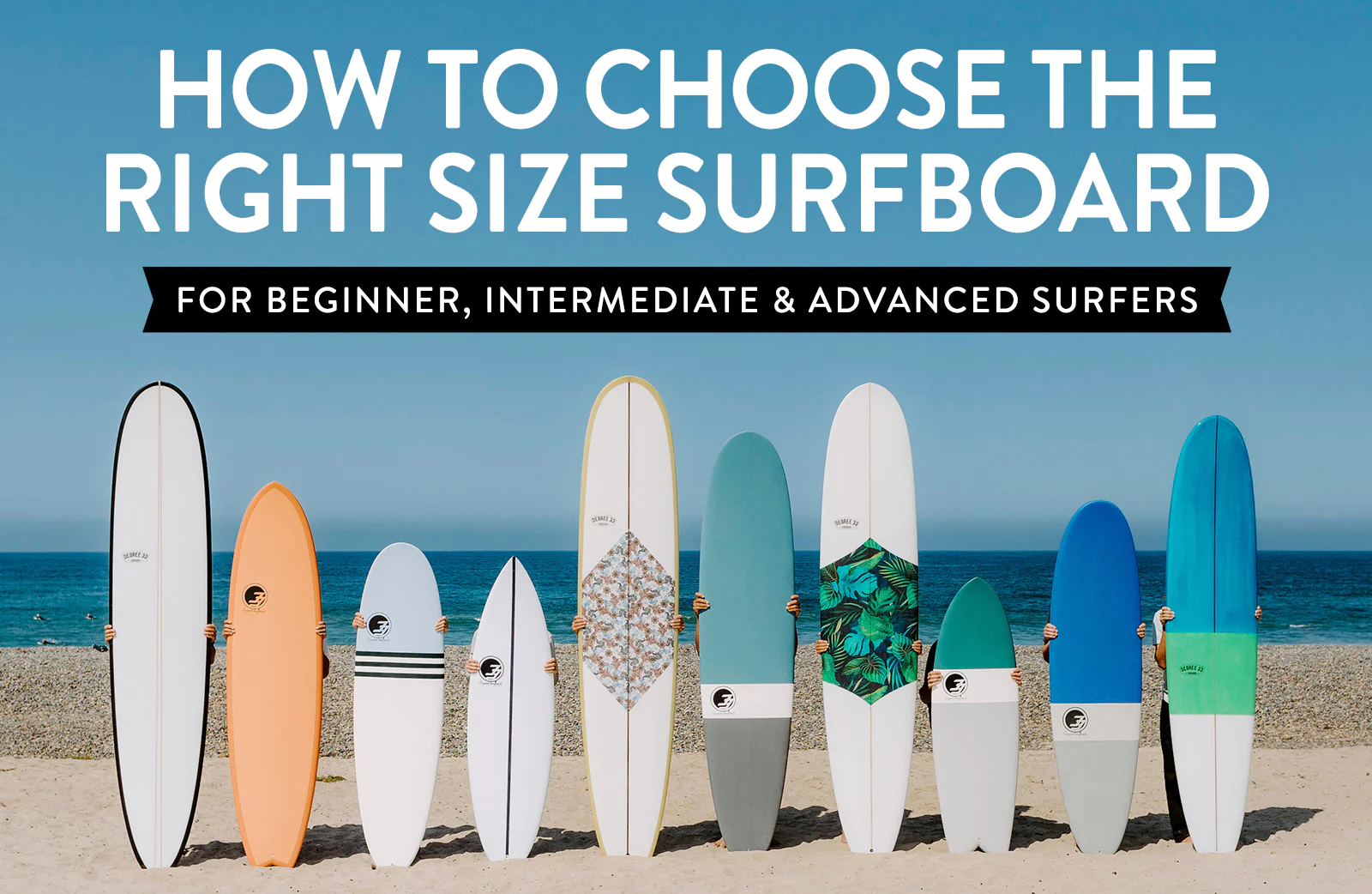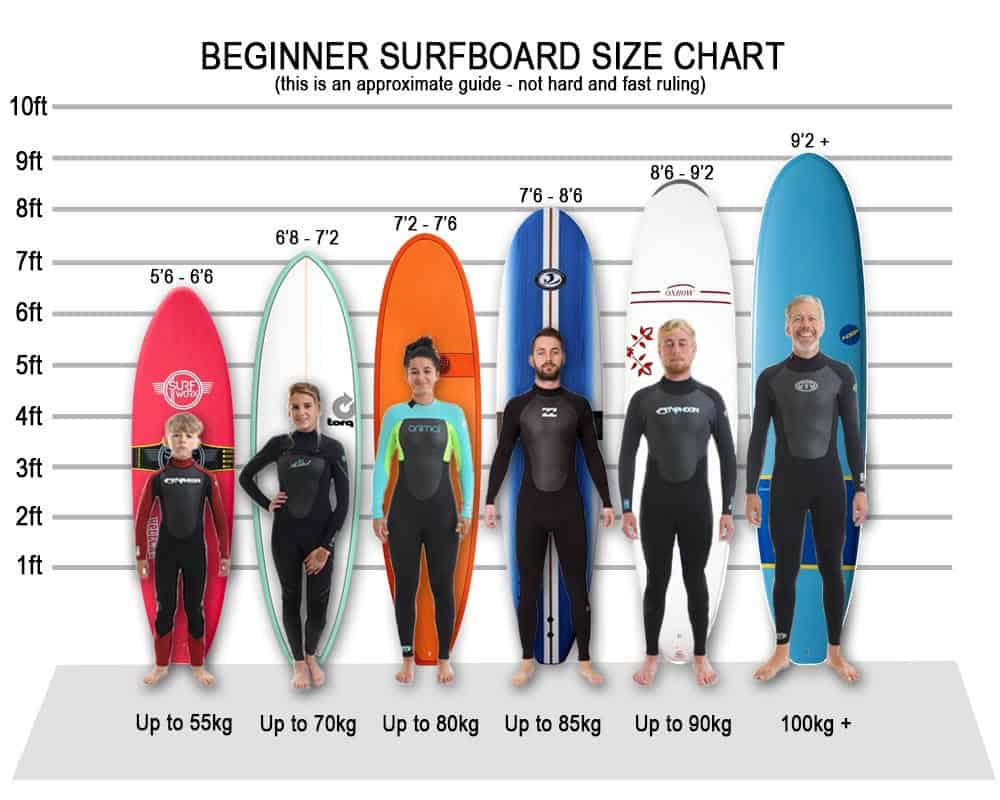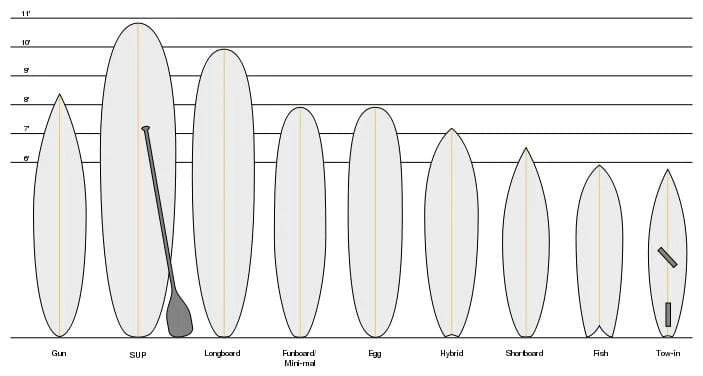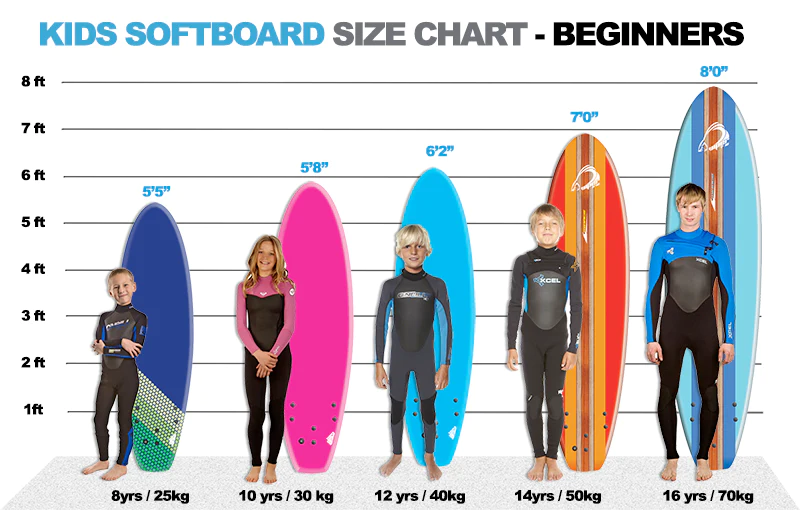Choosing the right surfboard size is crucial for any surfer, whether you’re a beginner or an experienced pro. The size of your surfboard can greatly impact your performance and enjoyment in the water.
In this article, we will explore the various factors that should be considered when selecting a surfboard size. From understanding how your body type and surfing style play a role to considering wave conditions and consulting with experts, we will cover it all.
Key Takeaways
- Choosing the right surfboard size is crucial for your surfing performance and enjoyment.
- Factors to consider when selecting a surfboard size include your body type, surfing style, and wave conditions.
- Trying out different surfboard sizes and consulting with a surfboard expert can help you find your ideal size.
- Common mistakes to avoid when choosing a surfboard size include selecting a board that is too small or too big for your skill level.
- Progressing from a beginner to a pro requires finding the right surfboard size and continually challenging yourself with new boards and wave conditions.
Understanding the Importance of Choosing the Right Surfboard Size
The size of your surfboard plays a significant role in how well you perform on waves and how much fun you have while riding them. A board that is too small may make it difficult to catch waves or maintain stability, while a board that is too big can hinder maneuverability and responsiveness.
Using the wrong size surfboard also poses risks to your safety in the water. If you’re struggling to control an oversized board, it becomes harder to navigate through crowded lineups or avoid collisions with other surfers. On the other hand, if your board is too small for your skill level, you may find yourself constantly wiping out or getting caught in dangerous situations.
Factors to Consider When Choosing a Surfboard Size
When selecting a surfboard size, there are several factors that need to be taken into consideration:
1) Height: Your height plays a crucial role in determining what length of board will work best for you. Taller individuals generally require longer boards for better stability and paddling efficiency.
2) Weight: Your weight affects how much buoyancy your board needs to provide for optimal performance on waves. Heavier individuals typically need larger boards with more volume to ensure they float properly.
3) Fitness Level: Your fitness level determines how well you can handle different sizes of boards. If you’re physically fit and have good core strength, you may be able to handle smaller boards more easily than someone who is less fit.
The Role of Your Body Type in Determining Your Surfboard Size
| Body Type | Surfboard Size | Weight Range | Skill Level |
|---|---|---|---|
| Small and Light | 5’6″ – 6’2″ | 100 – 150 lbs | Beginner to Intermediate |
| Medium Build | 6’0″ – 7’0″ | 150 – 180 lbs | Intermediate to Advanced |
| Large and Heavy | 6’6″ – 8’0″ | 180 – 220 lbs | Advanced to Pro |
Your body type, including your height, weight, and fitness level, plays a significant role in determining the right surfboard size for you. For example, if you’re tall and lean, a longer board with less volume may be suitable for your body type. On the other hand, if you’re shorter and heavier, a wider board with more volume will provide better stability and buoyancy.
It’s important to consider your body type when choosing a surfboard size because it directly affects how well you can maneuver on waves. A board that is too small for your body type may feel unstable and make it difficult to maintain control while riding. Conversely, an oversized board may be challenging to turn or perform tricks on.
To choose the right surfboard size based on your body type, it’s recommended to consult with experienced surfers or professionals at local surf shops who can provide personalized advice tailored to your specific needs.
How Your Surfing Style Affects Your Surfboard Size Choice
Different surfing styles require different surfboard sizes to optimize performance in the water. Whether you prefer longboarding or shortboarding, understanding how your surfing style influences the choice of surfboard size is essential.
Longboards are typically larger in size compared to shortboards as they offer more stability and ease of paddling. They are ideal for beginners or those who enjoy cruising along smaller waves without performing intricate maneuvers.
On the other hand, shortboards are designed for more aggressive maneuvers such as sharp turns and aerial tricks. These boards are smaller in size with less volume but offer greater maneuverability and responsiveness on steeper waves.
The Different Types of Surfboards and Their Ideal Sizes
Surfboards come in various shapes and sizes depending on their intended use:
1) Shortboards: Shorter boards ranging from 5’6″ to 7’0″ are commonly used by experienced surfers who enjoy high-performance maneuvers on steep waves.
2) Fishboards: Fishboards are wider and shorter than traditional shortboards, providing better stability and speed. They are ideal for smaller, mushier waves.
3) Funboards: Funboards, also known as mini-malibus or hybrids, offer a balance between the stability of longboards and the maneuverability of shortboards. They range from 7’0″ to 8’6″ in length.
4) Longboards: Longboards typically range from 8’0″ to 10’0″ in length and provide excellent stability and ease of paddling. They are perfect for beginners or those who prefer a more relaxed style of surfing.
It’s important to choose the right size within each type of surfboard based on your body type, skill level, and preferred surfing style. Experimenting with different sizes can help you find the perfect fit for your needs.
The Impact of Wave Conditions on Your Surfboard Size Selection
Wave conditions play a significant role in determining the appropriate surfboard size for optimal performance. Different wave types require different board characteristics to ensure an enjoyable experience in the water.
For small or mushy waves with less power, longer boards with more volume provide better buoyancy and stability. These boards allow you to catch waves easily and maintain control even when faced with weaker swells.
In contrast, larger or more powerful waves require shorter boards that offer greater maneuverability and responsiveness. Smaller boards allow you to make quick turns and perform tricks without sacrificing control over your ride.
Considering wave conditions when choosing a surfboard size is crucial because it directly affects how well you can navigate through different types of waves while maintaining balance and control over your board.
The Importance of Trying Out Different Surfboard Sizes
Trying out different surfboard sizes is essential before making a final decision on which one to purchase. Each surfer has unique preferences and requirements, and what works for someone else may not necessarily work for you.
By testing out various sizes, you can get a better understanding of how different boards feel under your feet and how they perform in the water. This firsthand experience allows you to make an informed decision based on your personal comfort, stability, maneuverability, and overall enjoyment.
It’s recommended to borrow or rent different surfboards from friends or local surf shops to try them out in various wave conditions. Take note of how each board feels while paddling, catching waves, turning, and performing tricks. This experimentation will help you narrow down the ideal size that suits your individual needs.
Tips for Measuring Your Ideal Surfboard Size
Accurately measuring your ideal surfboard size is crucial when making a purchase or seeking advice from professionals. Here are some tips to help you measure the right size:
1) Consider your skill level: Beginners generally benefit from longer boards with more volume as they provide better stability and buoyancy.
2) Consult with experts: Seek advice from experienced surfers or professionals at local surf shops who can guide you through the process of measuring your ideal surfboard size based on factors such as height, weight, fitness level, surfing style, and wave conditions.
3) Test different sizes: As mentioned earlier, trying out different sizes is essential in determining what works best for you personally. Don’t rely solely on measurements; trust your own experience in the water.
The Benefits of Consulting with a Surfboard Expert
Consulting with a surfboard expert offers numerous benefits when it comes to choosing the right surfboard size:
1) Personalized advice: Experts can provide tailored recommendations based on their extensive knowledge and experience in surfing equipment.
2) Access to specialized knowledge: Professionals have an in-depth understanding of various board shapes and designs that cater to specific needs such as performance, stability, or wave conditions.
3) Assistance in finding the perfect fit: Surfboard experts can help you navigate through the overwhelming options available in the market and narrow down your choices to find the ideal surfboard size that suits your individual needs.
To find a surfboard expert, consider visiting local surf shops or reaching out to experienced surfers within your community. Their insights and guidance can greatly enhance your surfing experience.
Common Mistakes to Avoid When Choosing Your Surfboard Size
When selecting a surfboard size, it’s important to avoid common mistakes that many beginners make:
1) Overestimating skill level: It’s crucial to be honest with yourself about your skill level and choose a board that matches it. Starting with a board that is too small or advanced for your abilities will hinder progress and potentially lead to frustration.
2) Ignoring body type: Neglecting factors such as height, weight, and fitness level when choosing a surfboard size can result in an ill-fitting board that negatively impacts performance and enjoyment.
3) Failing to consider wave conditions: Not taking into account the type of waves you’ll be riding can lead to choosing an inappropriate board size. Always consider how different boards perform under specific wave conditions for optimal results.
By avoiding these common mistakes, you increase your chances of finding the right surfboard size that enhances both safety and enjoyment in the water.
How to Progress from a Beginner to a Pro with the Right Surfboard Size
Choosing the right surfboard size is not only important for beginners but also plays a significant role as you progress from novice surfer to pro:
1) Gradual transition: As you gain experience and improve your skills on smaller boards, gradually transitioning towards shorter boards allows for more advanced maneuvers while maintaining control over larger waves.
2) Experimentation: Trying out different sizes throughout your progression helps fine-tune what works best for you at each stage. Don’t be afraid to step out of your comfort zone and challenge yourself with new board sizes.
3) Continued consultation: Even as you become more experienced, consulting with surfboard experts can provide valuable insights into the latest board designs and technologies that may enhance your performance.
Choosing the right surfboard size is an ongoing process that evolves as you progress in your surfing skills. Embrace the journey and enjoy the ride!
In conclusion, choosing the right surfboard size is crucial for optimal performance, safety, and enjoyment in the water. Understanding how factors such as body type, surfing style, wave conditions, and personal preferences influence this choice is essential.
By considering these factors and consulting with experts when needed, you can find a surfboard size that suits your individual needs at each stage of your surfing journey. Remember to try out different sizes before making a final decision and avoid common mistakes that may hinder your progress.
Ultimately, finding the perfect surfboard size enhances not only your skills but also allows for a more enjoyable experience on waves. So go out there, explore different options, consult with experts if necessary, and ride those waves like a pro!
FAQs
What is surfboard size?
Surfboard size refers to the length, width, and thickness of a surfboard. It is an important factor in determining the performance and suitability of a surfboard for a particular surfer.
Why is surfboard size important?
Surfboard size is important because it affects the stability, maneuverability, and speed of the board. Choosing the right size can help a surfer improve their skills and enjoy the sport more.
How do I determine my surfboard size?
Surfboard size is determined by a combination of factors, including the surfer’s weight, height, skill level, and the type of waves they will be surfing. There are online calculators and charts that can help determine the appropriate size.
What are the different types of surfboards?
There are several types of surfboards, including shortboards, longboards, funboards, fish boards, and hybrid boards. Each type has its own unique characteristics and is designed for different types of waves and surfing styles.
What is the ideal surfboard size for beginners?
The ideal surfboard size for beginners is typically longer, wider, and thicker than those used by more experienced surfers. This provides greater stability and buoyancy, making it easier to catch waves and maintain balance.
What is the ideal surfboard size for advanced surfers?
The ideal size for advanced surfers depends on their skill level, the type of waves they will be surfing, and their personal preferences. Shorter boards are generally more maneuverable and better suited for high-performance surfing, while longer boards are better for cruising and catching smaller waves.





